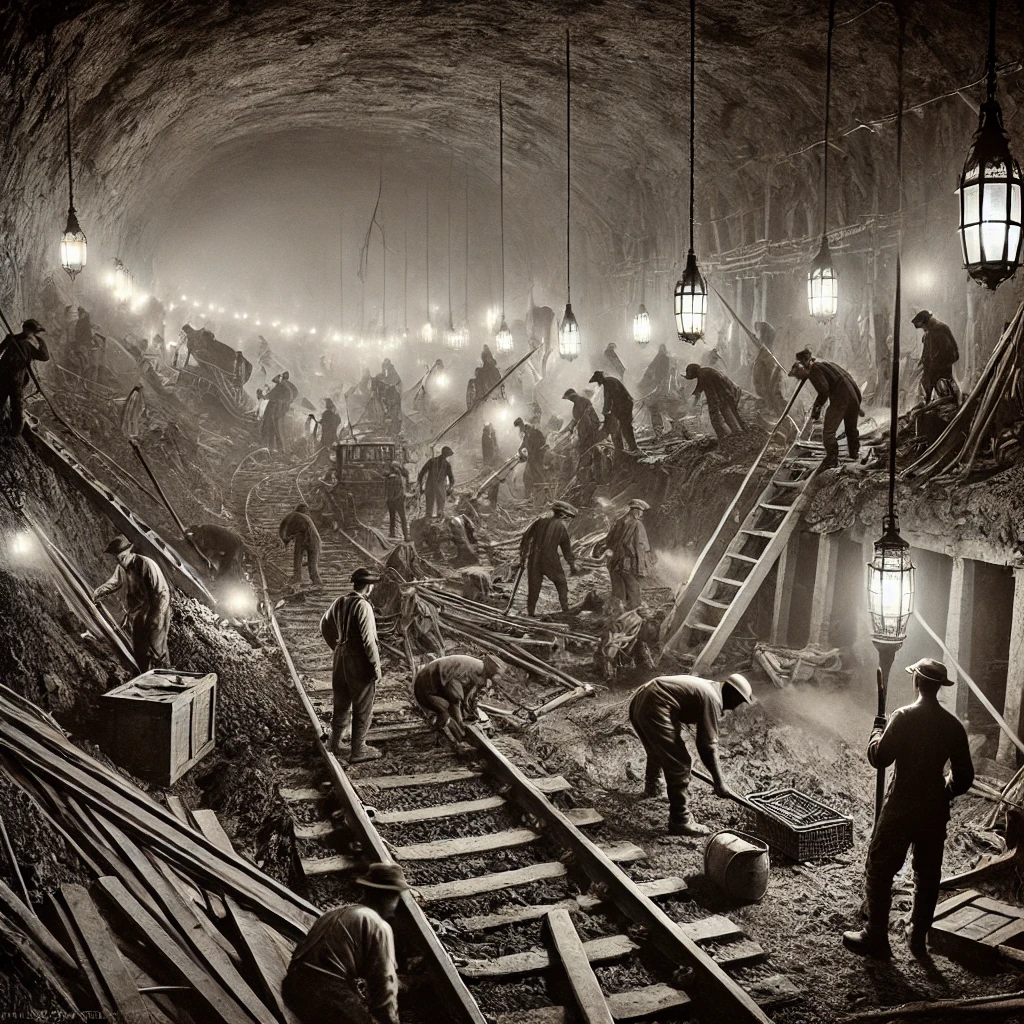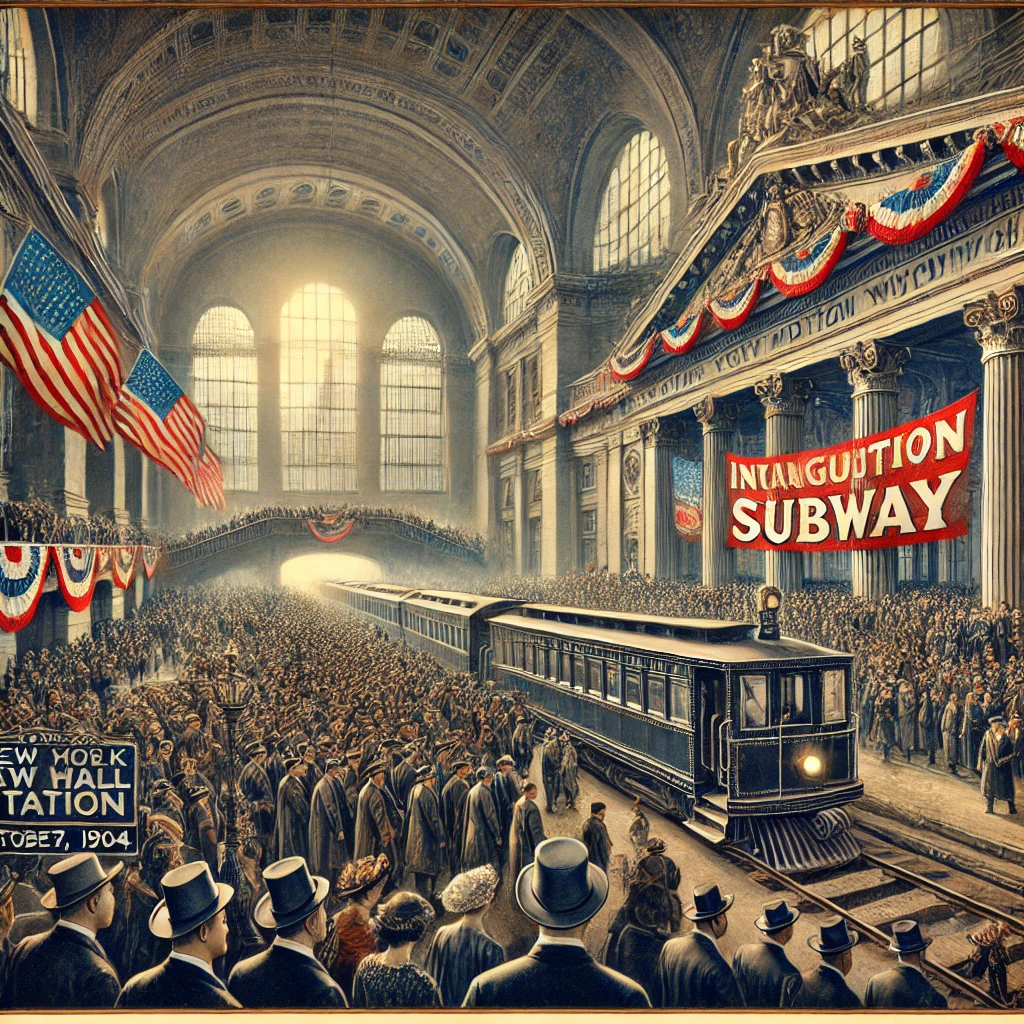On October 27, 1904, New York City made history with the opening of its subway system, a groundbreaking development that transformed urban transportation and reshaped the city’s landscape. The first line, which ran from City Hall to 145th Street in Harlem, marked the beginning of an extensive network that would eventually become one of the largest and most iconic subway systems in the world. This momentous occasion not only provided a new mode of transit for millions but also laid the foundation for the modern metropolis that New York City is today.

The Need for Efficient Transportation
In the early 20th century, New York City was experiencing rapid growth, with an influx of immigrants and a burgeoning population. The streets were congested with horse-drawn carriages and early automobiles, making transportation increasingly difficult. As the city expanded, the need for an efficient and reliable public transit system became urgent.
Prior to the subway’s inception, New Yorkers relied heavily on elevated trains and streetcars. However, these modes of transport were limited in capacity and often slowed by street-level traffic. City planners recognized that a subterranean system could alleviate congestion while providing a faster and more efficient means of travel for the city’s residents.

The Construction of the Subway
The construction of the New York City subway was a monumental undertaking, requiring significant engineering innovation and investment. The project began in 1900, with the first line being built by the Interborough Rapid Transit Company (IRT). Engineers faced numerous challenges, including geological obstacles and the need to minimize disruption to the bustling city above.
Using a method called the “cut-and-cover” technique, crews dug trenches along city streets, laid the tracks, and then covered the tunnels. The project drew considerable attention and funding, reflecting the city’s commitment to modernizing its infrastructure. Despite the obstacles, the subway was completed ahead of schedule, showcasing the determination and ingenuity of the engineers and laborers involved.
The Inauguration and Public Reaction
On October 27, 1904, the subway officially opened to the public, marking a significant milestone in the city’s history. The inaugural ride featured dignitaries and city officials, who celebrated the launch of this groundbreaking transportation system. As the doors opened to the public, New Yorkers eagerly lined up to experience the subway for themselves.

The initial response was overwhelmingly positive, with passengers marveling at the speed and convenience of the new transit option. The ability to travel from Lower Manhattan to Harlem in just under 30 minutes was revolutionary. The subway quickly became a vital part of daily life for millions of residents, reshaping commuting patterns and contributing to the city’s growth.
The Expansion and Legacy of the Subway System
Following the success of the initial line, the New York City subway system underwent rapid expansion. New lines were added, and the network quickly grew to accommodate the city’s increasing population and changing needs. By the 1920s, the subway had established itself as an essential component of New York City’s transportation infrastructure, providing millions with access to jobs, education, and leisure activities across the five boroughs.
Today, the New York City subway system is one of the largest and most complex in the world, with 472 stations and over 665 miles of track. It serves millions of passengers daily, providing a vital service to a diverse urban population. The subway not only reflects the city’s history but also its resilience and adaptability in the face of growth and change.
The opening of the New York City subway on October 27, 1904, marked a transformative moment in urban transportation and set the stage for the city’s development as a global metropolis. The subway’s introduction alleviated congestion, improved accessibility, and reshaped the urban landscape, becoming an integral part of the daily lives of New Yorkers. As we reflect on the significance of this historic event, we recognize the subway as more than just a transportation system; it symbolizes the spirit of innovation, progress, and the relentless pursuit of improvement that defines New York City. The legacy of the subway continues to influence urban transit systems worldwide, serving as a model of engineering excellence and a testament to the power of public infrastructure in shaping cities.
